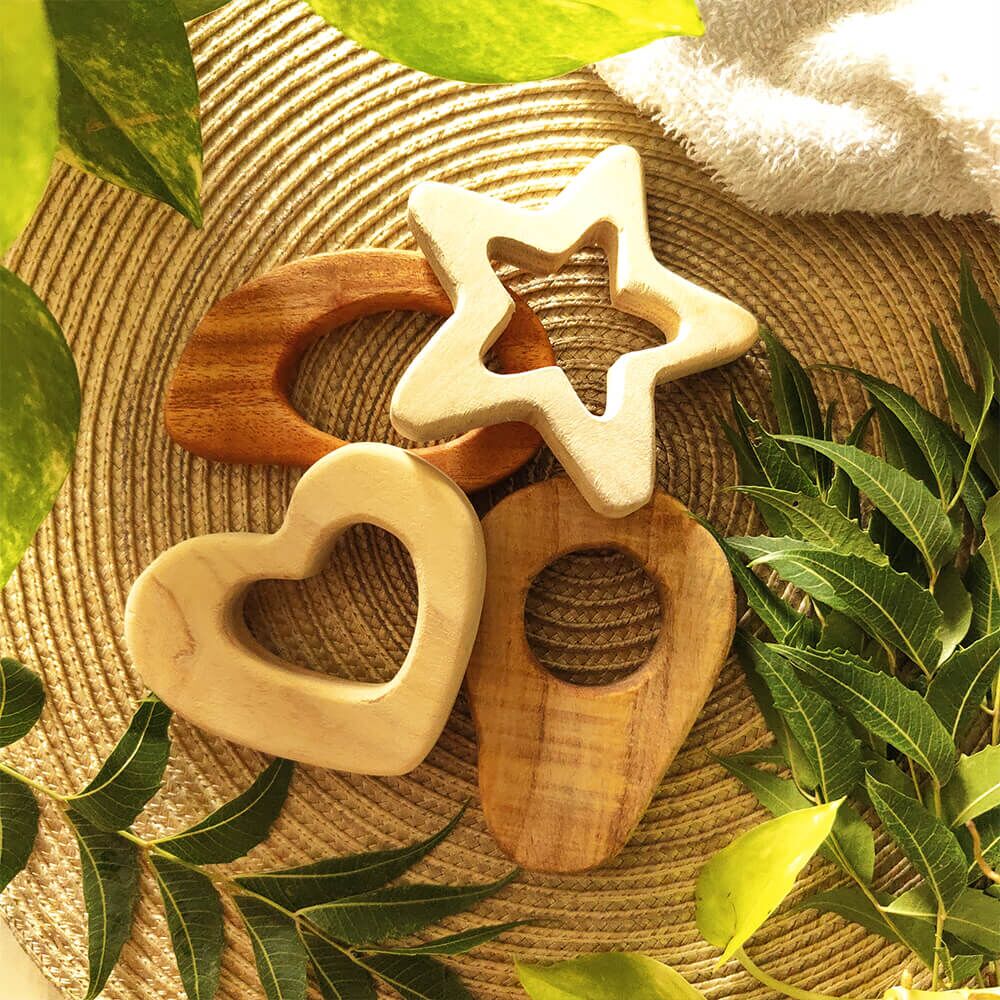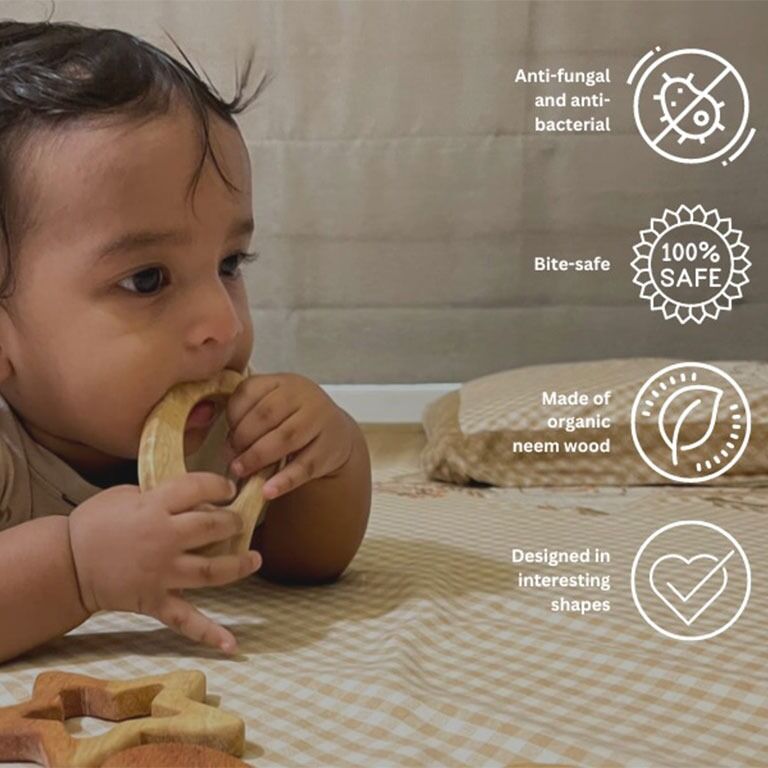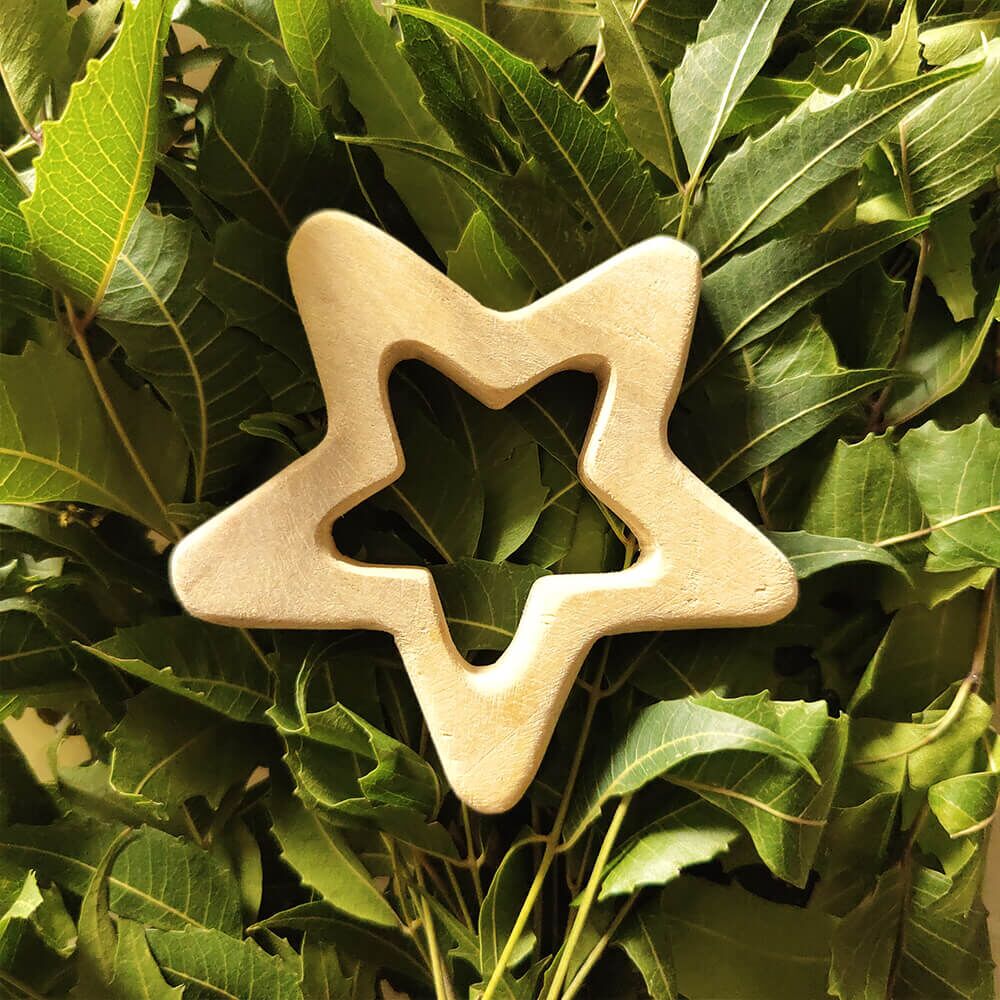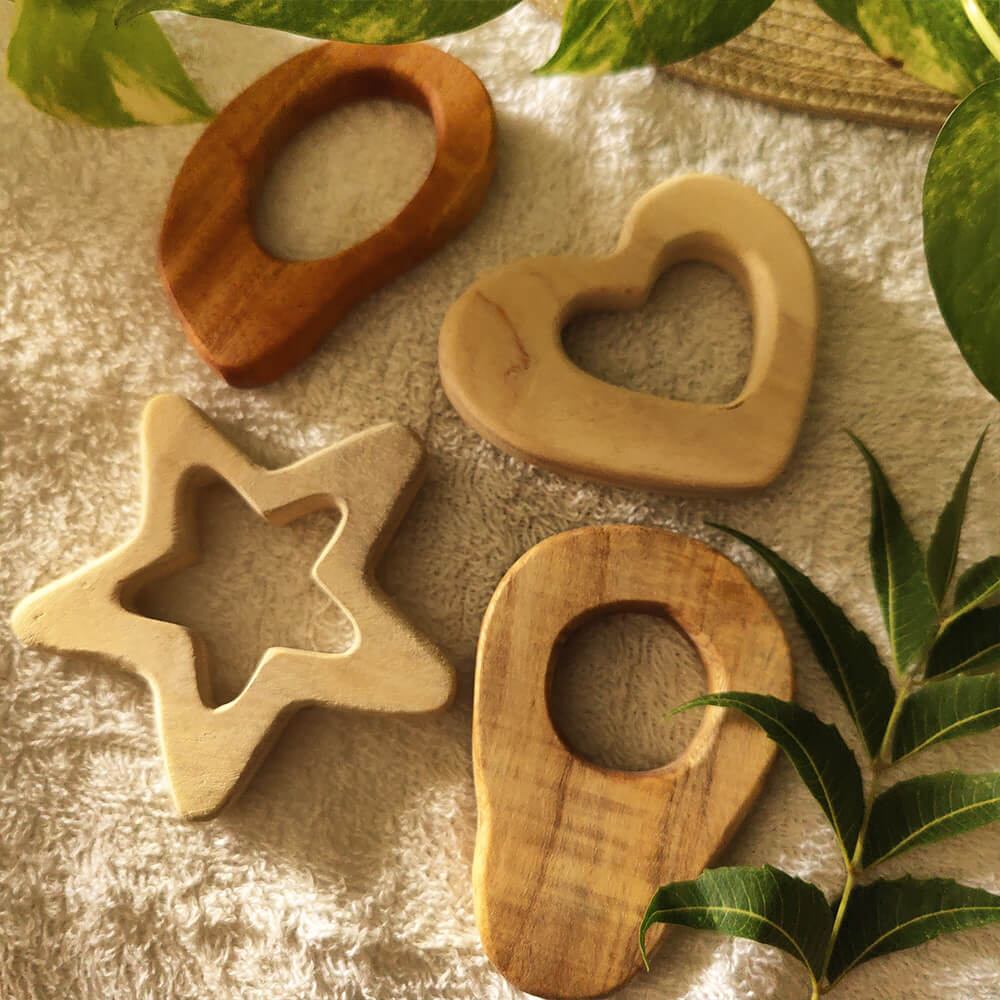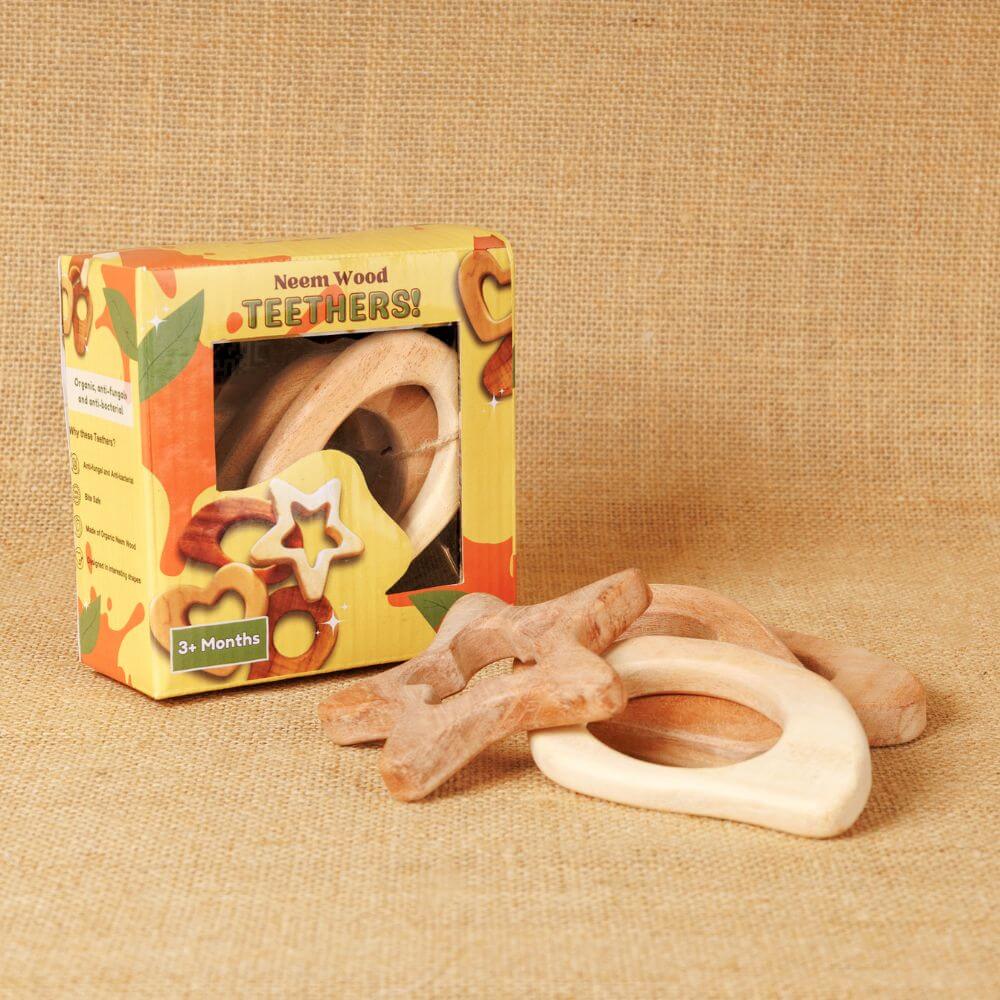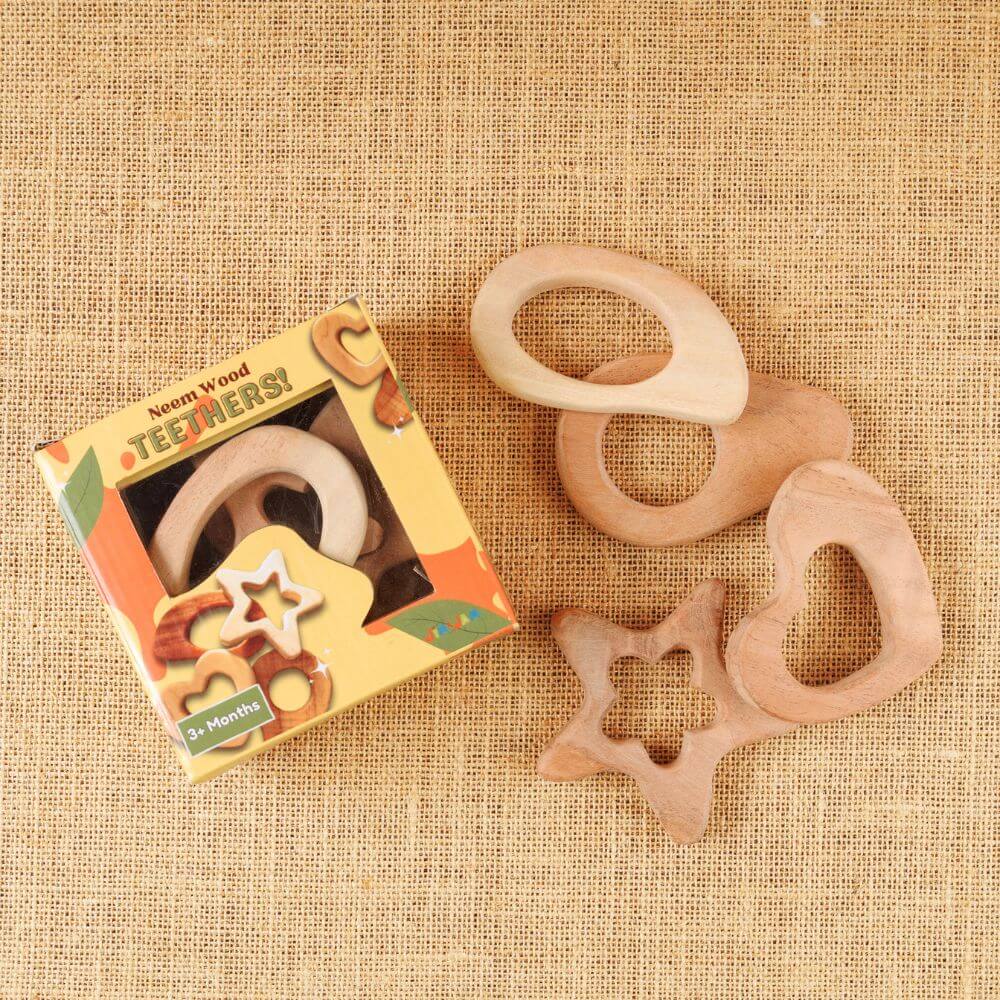1- When does one introduce a teether to a child?
Every baby is different. However, most babies start teeting around 4 months. With the advent of those tiny teeth, come in a host of challenges and at this point introducing a safe, organic teether can make a lot of difference in promoting their oral hygiene.
2- Will this teether be too hard on my baby's gums, considering it is made from wood?
Neem teethers are sturdy and can withstand the rigors of being biten into without any harmful chemicals getting ingested by the baby. These teethers tend to be soft enough for babies' mouths but hard enough for them to chew on without breaking apart too quickly.
3- I understand wooden teethers , but why neem wood?
Historically neem sticks were used for brushing by our forefathers as neem contains over 130 bioactive agents like Nimbin which have anti-infective and wound-healing properties. The prescence of these compounds in the neem tree contributes to the bitter taste of neem. However this also serves as a defense mechanism against herbivores and insects, as these compounds have insecticidal and antifeedant properties, making neem the perfect choice of material for a teether.
4- My baby takes everything in his/her mouth, except a teether. How should I introduce this to him/her?
Well, that is very common. Babies are not supposed to follow any prescribed manuals. However, they will absorb and grab everything we introduce them to at the right age. Keeping these teethers in close vicinity to the child would naturally pique the child's interest and encourgae him/het to grab it.
5- Does the teether need to be sanitized before every use? Is is safe to use as is?
Please do not dip or submerge the teether in water as that might cause discoloration and also lead the wood to warp or swell. Simply wipe it with a cloth before and after every use and store it back in the cotton drawstring bag provided. Please ensure there is no moisture content left on the teethers before storage.
